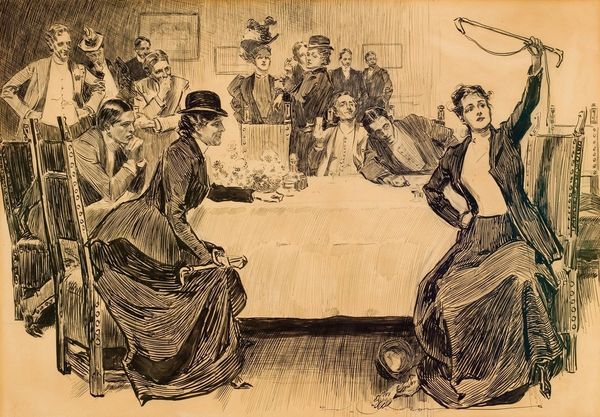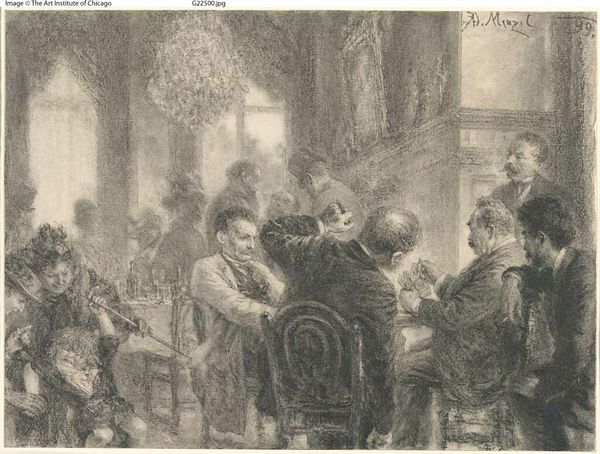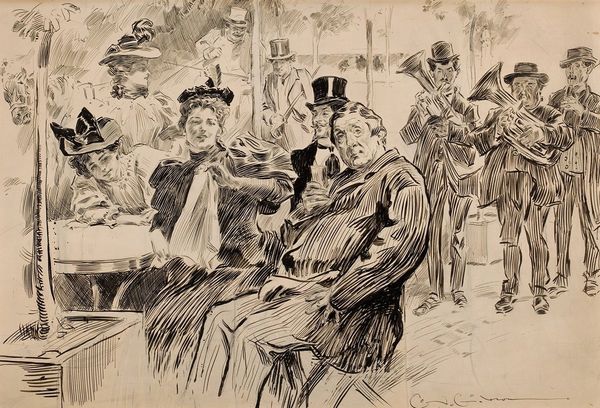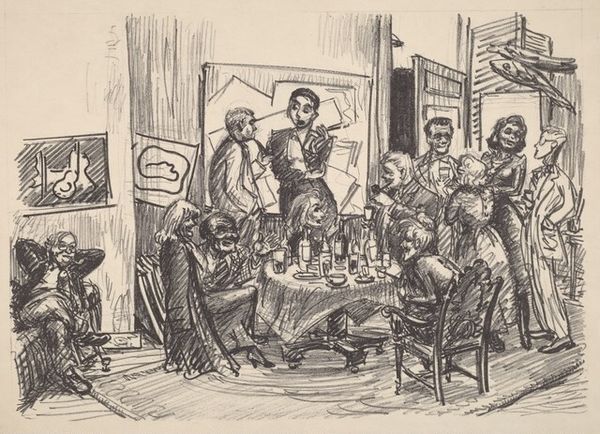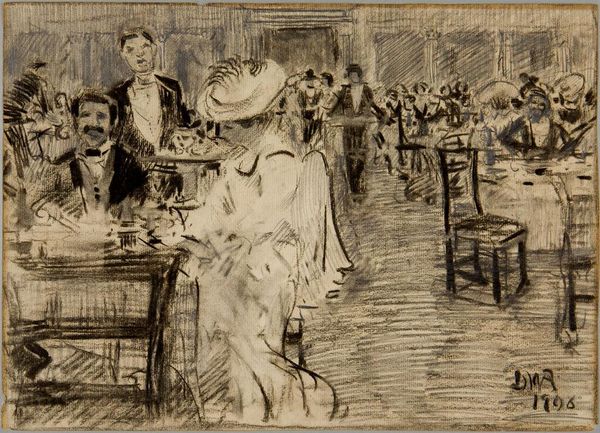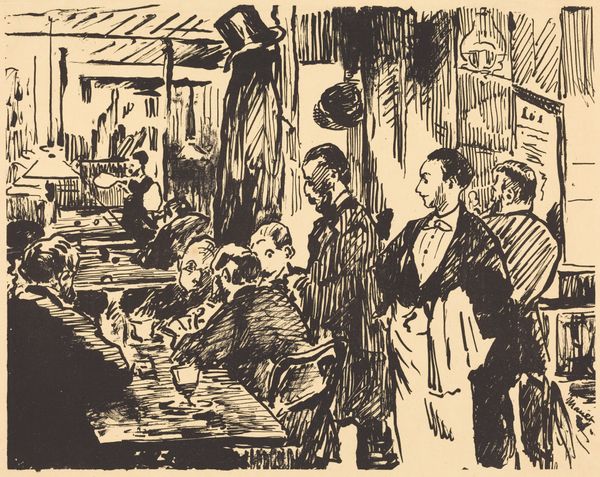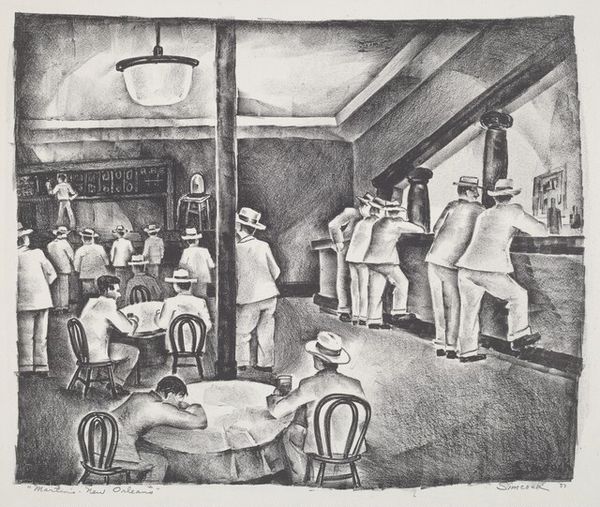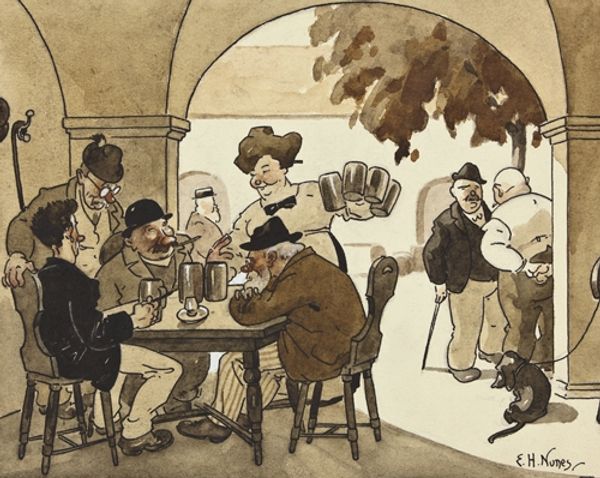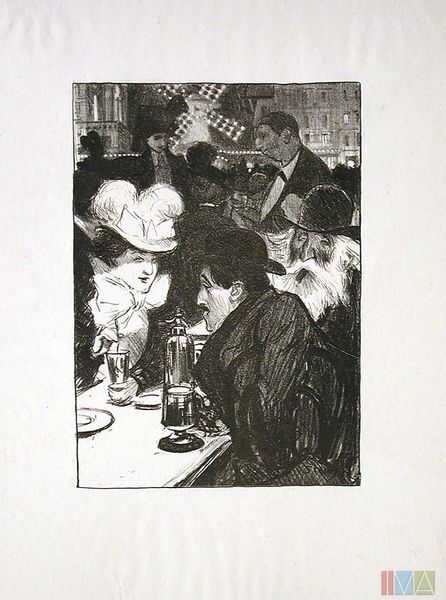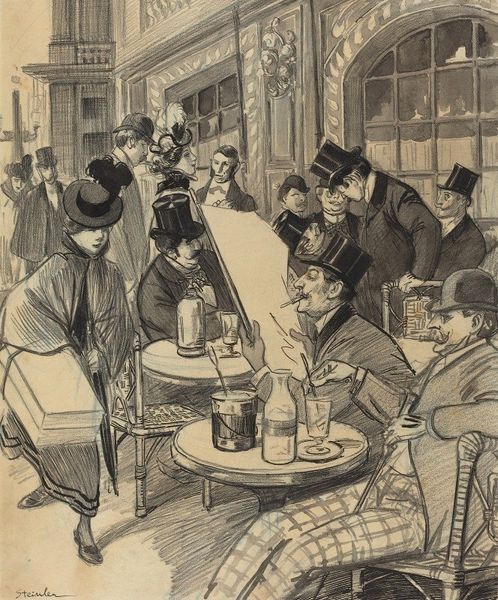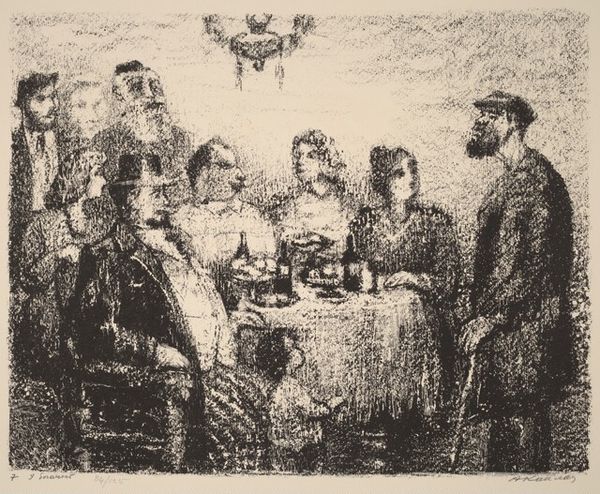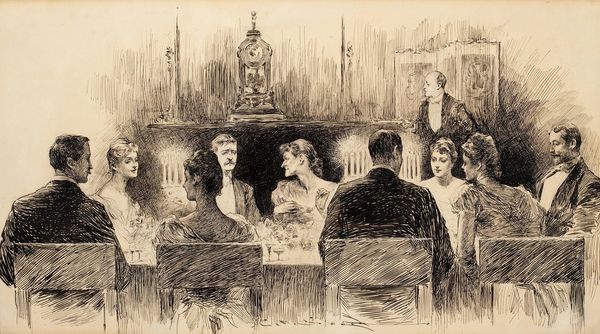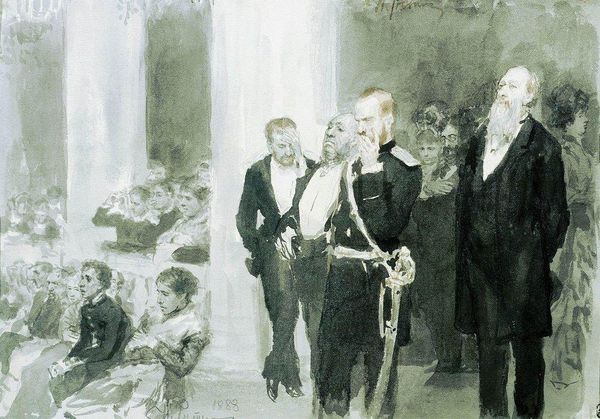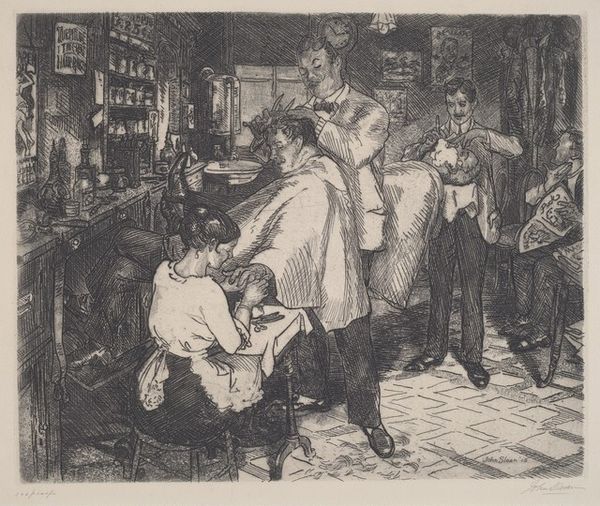
drawing, paper, ink
#
drawing
#
charcoal drawing
#
paper
#
ink
#
intimism
#
group-portraits
#
genre-painting
#
watercolor
#
realism
Dimensions: 15.7 x 29.2 cm
Copyright: Public domain
Curator: Wow, this just pulls you right in. Feels almost like eavesdropping, doesn’t it? Editor: Indeed. We're looking at “At the restaurant,” a genre painting by Ivan Kramskoy, rendered in charcoal, ink, and what seems to be watercolor on paper. What strikes you as you are pulled into it? Curator: Definitely the sepia tones, a dream-like haze, as if viewed through the smoky memory of an old restaurant. The atmosphere vibrates with conversations you can almost hear and that mandolin's quiet melody in the corner. Editor: I find myself drawn to the abundance of faces here. In many cultures, the act of dining together carries deep symbolic weight – fellowship, celebration, communion. Observe the waiter at the back, his face obscured, bearing food: he is almost like the Greek god Hermes. It’s hard not to see connections to rituals played out over millennia, re-enacted around tables every day. Curator: Absolutely, this feels less about the physical act of eating, and more about being among people. These are fragmented social rituals, and I keep wondering what’s the occasion for this scene! Who are all these characters in it, are they familiar faces? It could just as easily be the last supper, don’t you think? It feels suspended somewhere in time, thanks to the realism of the style. Editor: Note, also, how he deploys line and form to achieve a mood—observe the glasses shimmering in light, or the somber presence of the seated men that create emotional tones through symbolism. The composition itself feels very carefully planned and organized. Curator: Maybe. It also feels a little chaotic, doesn’t it? So many blurred edges and suggestive impressions—deliberately not crystal clear. That's life sometimes, you know, especially during celebrations, half seen and a little disorientating, isn't it? Editor: I do like how you describe the composition's realism. The blurred lines may mirror the way our memories actually function – fragmented, dreamlike, impressions that fade into something other than literal truth. It challenges notions of seeing the past in a pristine manner. Curator: That really resonates. I can almost taste the sweetness, and smell those fragrances and the people surrounding it... Wonderful artwork. Editor: Agreed. This artwork, therefore, prompts a further examination into how we visually portray cultural rituals, and collective memory making itself through daily repetition. Thank you for these considerations!
Comments
No comments
Be the first to comment and join the conversation on the ultimate creative platform.
